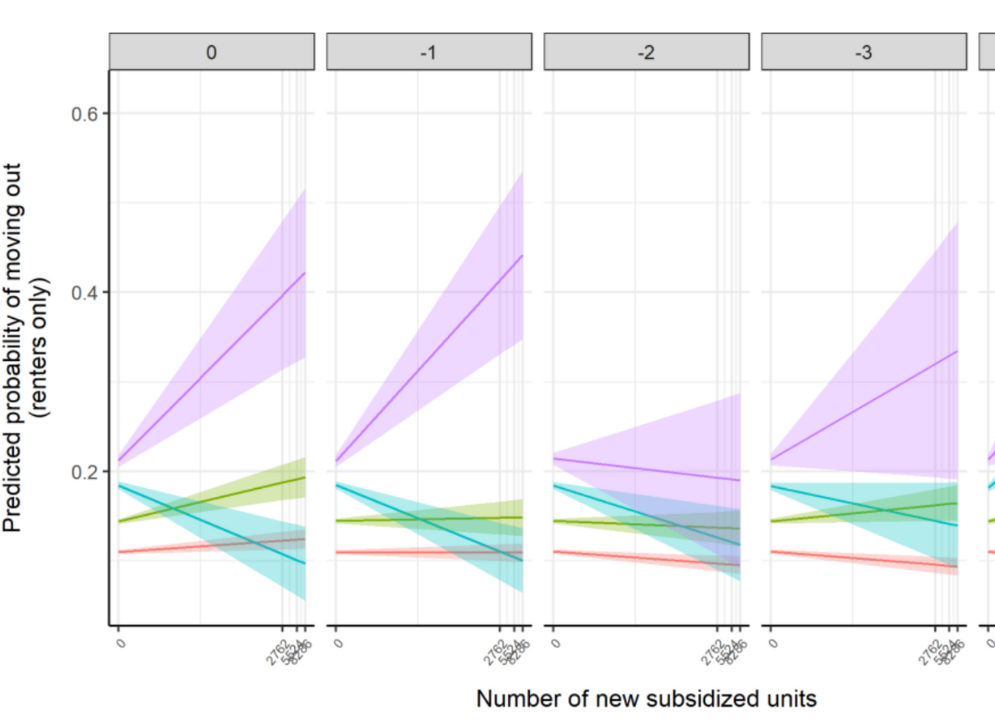By Karen Chapple, Jackelyn Hwang, Jae Sik Jeon, Iris Zhang, Julia Greenberg, and Bina P. Shrimali
Federal Reserve Bank of San Francisco Community Development Working Paper
March 2022
The report examines governmental policies and programs aimed at ensuring housing access for residents across income levels in the San Francisco Bay Area. Despite various efforts, an affordable housing crisis persists, prompting the need for comprehensive evaluation research. To address this gap, the study constructs detailed datasets capturing mobility patterns and housing interventions’ impacts. It analyzes individual and household movements as proxies for displacement and evaluates the effects of interventions like upzoning, permit streamlining, subsidized housing production, and tenant protection programs.
Key findings highlight the association between market-rate housing production and increased mobility across income levels, with the lowest-SES households more likely to make constrained moves. Tenant protections, including just cause and rent stabilization ordinances, correlate with decreased mobility for lower-SES residents but increased mobility for higher-SES groups. Subsidized housing production shows potential in mitigating displacement, particularly for low-SES residents.









